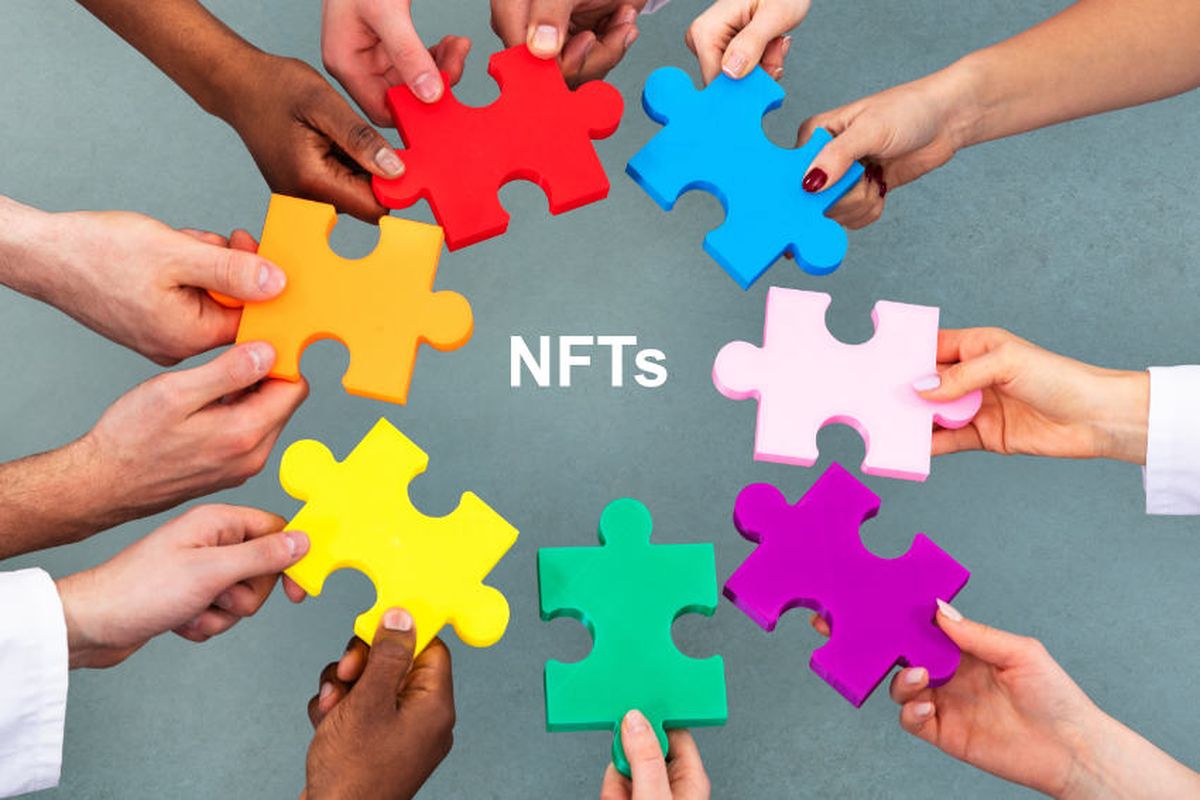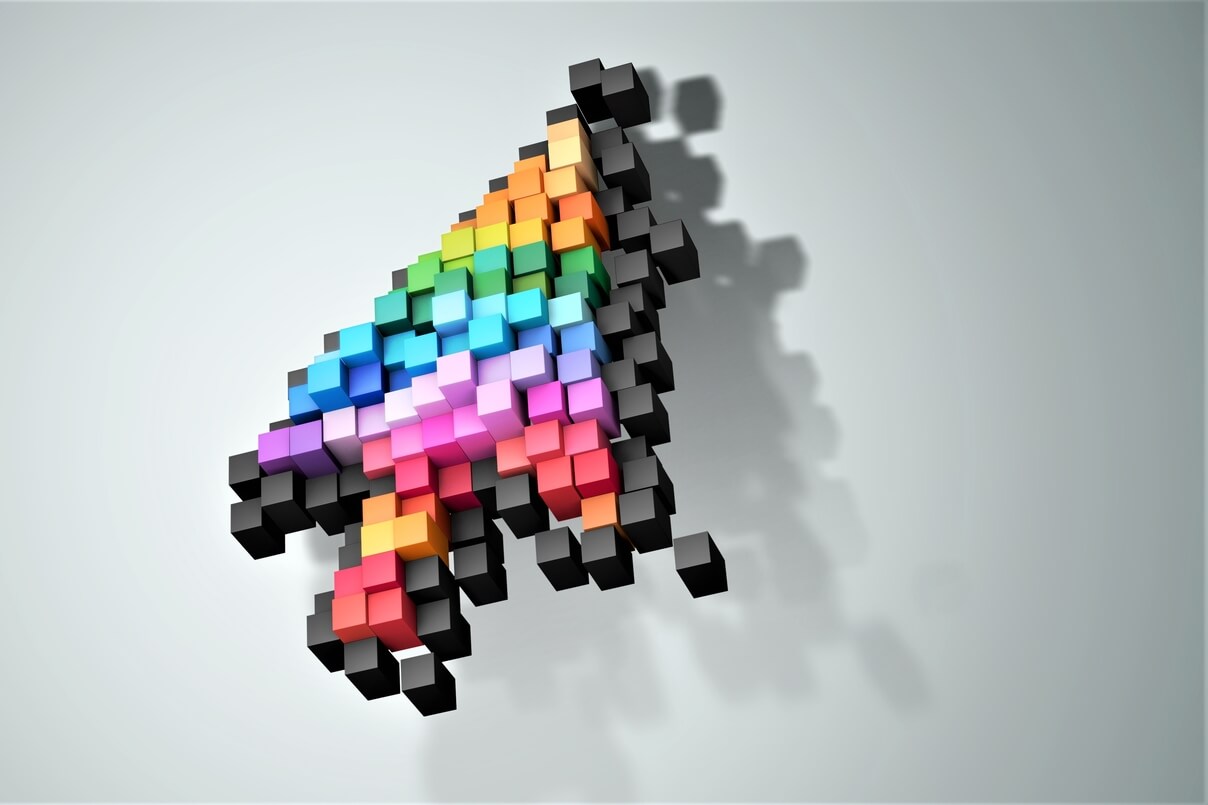Fractional NFTs are nonfungible tokens that let users divide an NFT into many fractions. The division helps in reducing the barrier to entry for investing in real-world assets.
While the current crypto winter is affecting even NFTs extensively, some developers are using this time to build and develop some new concepts using the technology.
One such new concept is fractional NFTs. This iteration of NFTs allows many investors to own a piece of one token. These NFTs differ from the normal nonfungible tokens in that they use smart contracts to fractionalize the token into several parts predetermined by the owner or issuing firm, who also set the Minimum price.
Related: First Fractionalized NFT on Tier 1 Exchange
When this concept is applied to real-world assets, the NFTs offers an interesting use case for investors who want to own any valuable physical world goods. Fractional NFTs ideally spread the cost of asset ownership over a large number of users, making it possible for many investors to own a section of a bigger asset.
The head of the global group at Klaytn Foundation, David Shin, commented:
“They enable more people to reap the benefits of asset ownership while reducing the amount of upfront capital required per user, creating more inclusivity for users who would otherwise have been priced out.”
Tokenized ownership is nothing new. Before the inception of NFTs, tokenization was a way for users to fractionize physical-world assets. Nonetheless, fractional NFTs offer a new method for investors to share the cost and transfer ownership of specific assets.
Increased Accessibility
Accessibility ranks among the major benefits of NFT fractionalization since it is highly affordable for investors. Thus, it reduces the barrier to entry for owning various assets.
Notably, the collective ownership that comes with fractional NFTs enables a group of investors to own various assets with previously high barriers to entry. For instance, owning art pieces or real estate needs investors to meet specific requirements, whether a certain level of net worth or specific legal requirements.
By utilizing fractional NFTs, these challenges and hurdles might be bypassed by the average person. The co-founder and CEO of Walken, Alexei Kulevets, commented:
“No matter whether you are a builder, a collector, or a consumer, with fractional NFTs, you can co-own any fragment of an art piece or an NFT project you work on. Or, it could be something entirely different, where ownership is verified by an NFT (e.g., real estate). Think of it as an exchange-traded fund, only without intermediaries and management fees. I think it’s a beautiful concept, fully worthy of being called the new era of the internet. The era of co-creating and co-owning.”
Joel Dietz is the CEO of MetaMetaverse, a metaverse creation platform. Dietz echoed the sentiment echoed the sentiment of Kulevets stating:
“It makes it easier and, more importantly, accessible. Asset fractionalization isn’t new, but it entered the NFT space not that long ago — one aspect is to make expensive tokens more accessible to different investors with different appetites — it makes it easier to set the price for NFTs and even unlocks monetization opportunities via DeFi platforms.”
The increased accessibility can easily attract new investors into the blockchain space, as explained by Asif Kamal, the founder of Artfi, a Web3 fine art investing platform. He believes that fractional ownership is the way forward which will help boost the size of the market significantly. It is also expected to help adoption and accessibility to a bigger audience to invest in the asset class smoothly and in a simple way.
How Do Fractional NFTs Work?
Since most nonfungible tokens use Ethereum’s ERC-721 standard, fractionalization can be understood by taking the example of an ERC-721 NFT.
To break an NFT into fractions, it needs first to be locked in a smart contract that splits the ERC-721 token into many ERC-20 tokens according to the instructions the nonfungible token owner has provided. The owner specifies all that he wants, from the total number of ERC-20 tokens to be developed, to their prices, to the metadata to be used, to any other property they feel is important.
Every fraction or ERC-20 token developed represents some partial ownership of the NFT. These fractions can then be put up for sale at a constant price for a specified time or until they are sold out.
Here is an example to explain the fractional NFTs concept. The Scream by Norwegian artist Edvard Munch ranks among the most iconic artworks ever developed. When it was put up for sale at a Sotheby’s auction in 2011, Leon Black, a New York financier, purchased it for nearly $120 million. How much would an NFT representing this artwork cost?
It is correct to state that its price will run into the millions and thus will fit the budgets of just a few wealthy people. Nonetheless, in case the exorbitantly priced NFT might be fractionalized into some 10,000 ERC-20 tokens, people can invest in the artwork by paying as low as $12,000 per fraction.
Hence, fractionalization makes rare and expensive NFTs affordable and more attractive to small- and mid-size investors. It is critical to note that fractional NFTs do not just operate on the Ethereum blockchain. Fractionalization is highly possible on any blockchain that supports smart contracts and nonfungible tokens.
Networks like Solana, Polygon, and Cardano can all support fractional NFTs ownership transfers.
What Are The Notable Use Cases Of Fractional NFTs?
Real estate is a popular use case for fractional NFTs, and the underlying blockchain technology offers an extra layer of transparency. For instance, users can view past buyers and investment activity through the blockchain explorer.
Dietz said that the normal use case that everyone is quite keen on currently about Fractional NFTs is the possibility for an investor to transfer ownership of real estate (an IRL asset) – storing all the information on the blockchain and later transferring smoothly and immutably.
He added:
“Owning a fraction of an NFT that represents a real-world asset, investors can cash out of their crypto holdings without ever leaving the decentralized finance ecosystem entirely. Now, the hype focuses on real estate, but these fractionalized high-involvement goods could be very interesting in the manner of watches, paintings, boats, planes, and more.”
Play-to-earn gaming is another notable use case for fractional nonfungible tokens. It enables many players to buy expensive in-game assets collectively. In-game NFTs can become quite expensive because of increased demand. Hence, enabling gamers to split the cost can make it much easier for them to use these same assets.
Related:Practical NFT Use Cases Beyond Digital Artworks
For instance, the P2E NFT game Axie Infinity is now testing the idea of fractionalized NFTs by selling fractions of their rarest Axie NFTs.
Huge Barriers To Adoption
While fractional NFTs might make it easy for people to invest in various assets, market conditions might interfere with their adoption.
According to Dietz, considering the market at the current conditions, we will either see more developers and marketplaces using fractional NFTs or gain increased popularity via these mediums. However, if the conditions in the market do not change, fractional nonfungible tokens might not evolve any further.
“Who knows what the market will look like in the next three months, let alone three years?”
Legislators and regulators may also slow down the rate of adoption. Since fractional NFTs enable people to own a fraction of an asset, they might be classified entirely as stocks by the United States Securities and Exchange Commission (SEC).
The CEO at YARD Hub, a Web3 venture studio, Yaroslav Shakula, commented:
“As an idea, fractional NFTs sound promising, but on a practical level owning them implies certain difficulties, with regulation being the most significant one. Fractional NFTs might be likened to stocks as they also confirm ownership of a share of an asset (NFT, in this case).”
Shakula also insists that the current law is not clear on the legal status of fractional NFTs being used to own some segment of the physical assets. In most cases, this type of nonfungible token ownership is not fully outlined in the legislation. Therefore, users and projects encounter a hard time determining how SEC and other regulators will deal with this ownership.
For now, fractional ownership is just valid in certain territories where the relevant legislation is set in place. Shin also said that the success of fractional NFTs in enabling investors to reap benefits from physical-world assets also depends heavily on whether the rules and regulations operate in tandem.
“For example, dissonance will occur if fractional NFTs and traditional title deeds pose competing legal claims to real-world assets.”
Because of the uncertainty that exists behind the taxation and the legal status powering fractional NFTs, temporary ownership might be a safer bet for the near term.
Shakula then expanded on this issue saying that currently, the most viable and practical approach is to transfer timeshare/temporary ownership via nonfungible tokens. Examples of use cases are the rights to rent a car or spend a night in a hotel.
That way, the NFT owners do not need to decide who pays the taxes or who is handling the damage costs. Nevertheless, until all these issues are resolved, fractional NFTs appear better on paper instead of having common use cases.
Related:ZestBloom Launches Eco-Friendly, Affordable Secure NFT Marketplace
Apart from the regulatory complications, some think that fractional NFTs represent the values of a fully decentralized internet. Kulevets believes that fractional NFTs are a catalyst for Web3 adoption. He said:
“If you look at it closely, fractional NFTs represent the very essence of the Web3 concept. We call Web3 the next era of the internet for a reason: decentralization, security, ownership, and creation without intermediaries are among its fundamentals. Everyone who shares the vision, skills, and expertise can co-create and co-own the new reality and be a part of many projects.”











